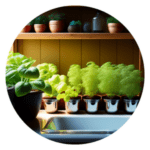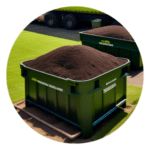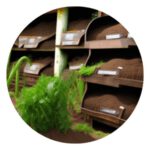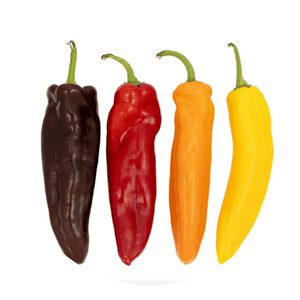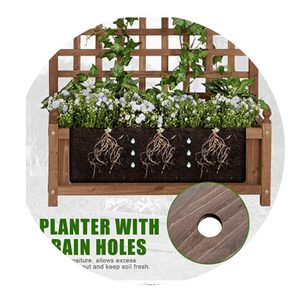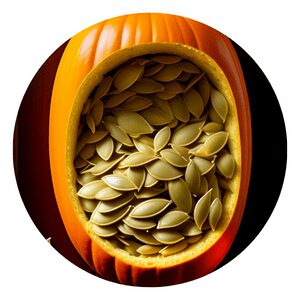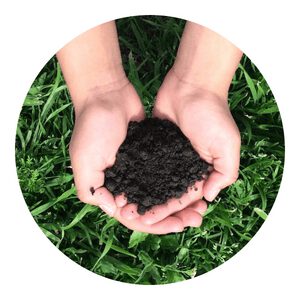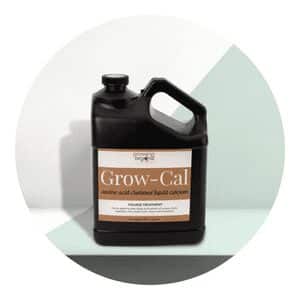Indoor Gardening Setup Guide
Indoor gardening is an enjoyable and rewarding hobby that can brighten up any home.
It allows you to have a little piece of nature in your own living space and adds charm to any room.
Whether you plan to grow herbs, flowers, fruits or vegetables, getting started with indoor gardening has never been easier.
This guide will provide you with the necessary steps and considerations for setting up your very own indoor garden.
Table of Contents
Benefits of indoor gardening
Indoor gardening has numerous benefits when compared to traditional outdoor gardening.
One of the most significant advantages is the ability to grow plants year round, regardless of the season.
This allows for a much wider variety of plants and vegetables than what would typically be available outside in any given location.
It also eliminates the need for expensive greenhouses or hoop houses while still providing control over temperature, humidity, light exposure and other environmental factors needed to successfully grow plants indoors.
The second benefit is that indoor gardening offers increased protection from pests and weeds compared to outdoor gardens.
This can help reduce the amount of time spent on maintenance as well as eliminate concerns about using harmful pesticides or herbicides around food crops.
The lack of rain also helps minimize diseases that can spread quickly in wetter environments, making indoor organic gardening an excellent option for those wanting healthy produce with minimal effort required.
Finally, indoor gardens are relatively easy to set up and maintain with minimal costs involved.
All you need is some basic supplies such as pots, soil, fertilizer and water containers along with a suitable light source depending on what type of plant you’re growing – either natural sunlight through windows or a specialized grow light setup will do just fine.
With all these advantages combined together it’s easy to see why many people are turning towards indoor organic gardening as a way to supplement their diets with fresh produce grown right at home!
Importance of proper setup
Having the correct setup for your indoor organic garden can be the difference between an abundant harvest or a disappointing one.
It is important to ensure that you have all the right materials and that they are properly assembled before planting any seeds or seedlings.
Proper lighting is essential for growth and should be based off of how much light your plants need in order to thrive.
Most vegetables require full sun and will need at least 6-8 hours of direct sunlight per day, while some herbs are more tolerant of lower light conditions.
Depending on where you live, this may mean purchasing grow lights which can simulate natural sunlight indoors.
Temperature is also key as most plants will not survive if temperatures dip too low during winter months.
Investing in a thermostat heater or electric heat mats will help keep these temperatures regulated and consistent throughout the year so your plants get what they need to grow healthy.
Choosing the right location
When selecting the right location for your indoor organic garden, there are several factors to consider.
Firstly, it’s important to pick a place that gets plenty of sunlight.
Your garden should be placed in an area with access to natural light for at least 6-8 hours per day.
Secondly, make sure the space is well-ventilated and provide good air circulation.
A fan or vent can help increase ventilation if necessary.
Lastly, consider the temperature; warm weather plants will do best in temperatures between 70-80 degrees Fahrenheit while cool or cold weather plants can handle lower temperatures around 50-60 degrees Fahrenheit.
Taking these factors into account will ensure you have the perfect spot for your new indoor garden!
Consideration for the right spot
Once you have chosen the type of plants you wish to grow, it is important to consider the placement of your garden.
The right spot will ensure that your plants get the light, air circulation and temperature they need for optimal growth.
When selecting a spot for your indoor organic gardening setup, make sure there is enough natural sunlight coming through the windows or other light sources to support your plants.
If not, plan on purchasing additional lighting such as LED bulbs or fluorescent lights.
Be aware that some plants require more hours of direct sunlight than others so adjust accordingly.
The temperature in the space should be kept consistent as well – too cold and some plants may suffer while too hot could result in wilting leaves or even death.
Additionally, proper air circulation should be taken into consideration when selecting a location.
Poor air circulation can lead to mold buildup which can cause root rot and potentially kill off your garden!
Rows of young seedlings growing Flow of water along the ground Organic produce ever flowing, Flourishing bounty all around Plants reaching for the light, Thriving life in utmost delight Nature's goods full of delight, Order seeds for fresh organic treat.
Chappy The Gardener
Light requirement
Light is the most crucial element for growing plants.
Most vegetables, fruits and herbs require 6-8 hours of direct sunlight on a daily basis.
Without sufficient light, these plants will not thrive or produce any yield.
In many cases, however, it may be difficult to provide enough natural sunlight due to limited windows and other factors.
In that case, you can use artificial light sources such as grow lights to supplement the available light in your space.
Grow lights come in different colors and intensities depending on the type of plant you’re growing.
For example, cool white LED lights are ideal for leafy greens while warm yellow LED lights are better suited for fruiting plants like tomatoes or peppers.
You should also adjust your lighting setup based on the season: during winter months when there is less natural sunlight available, you may need extra lighting to ensure your plants get enough exposure throughout their growth cycle.
Temperature and humidity control
Temperature and humidity control are essential components of an indoor organic gardening setup.
Properly controlling these two variables can determine the health and success of your plants.
In order to achieve optimal growth, it is important to maintain a consistent temperature between 65-75 degrees Fahrenheit (18-24 degrees Celsius).
If the room you are using as your grow space doesn’t have a heating or cooling system, consider investing in an energy efficient heater or air conditioner to keep temperatures stable.
Additionally, make sure that your plants aren’t near any windows or vents where they could be exposed to cold drafts or intense sunlight.
When it comes to humidity, a range between 40-60% is ideal for most plants.
Too much moisture in the air can cause fungal diseases like powdery mildew and root rot; too little moisture can result in stunted growth or leaf drop.
To increase humidity levels, you can use a humidifier; if levels get too high, you can use an oscillating fan at low speed to provide airflow without drying out the soil.
Choosing the right containers
When selecting containers for your indoor organic gardening setup, make sure to consider the type of plants you will be growing.
Different types of plants may have different needs when it comes to container size and material.
For example, a large container is better for a root vegetable such as carrots than a smaller pot would be.
Additionally, some materials are better suited for certain plants than others.
Clay pots allow air flow through their porous surface which helps keep soil moist and can work well for many herbs and vegetables.
Plastic containers are lightweight and inexpensive but need to be replaced more often than terracotta or ceramic pots due to their tendency to crack over time from exposure to moisture in the soil.
Ultimately, the best material depends on what kind of plant you’re growing – so do your research before making any purchases!
Types of containers
Containers are an essential part of any indoor organic gardening setup.
From basic plastic pots to elaborate self-watering systems, there is a container for every type of garden.
One popular option is the raised bed – these frames are filled with soil and can be placed directly on the floor or elevated off the ground.
Raised beds allow you to customize your soil mix and provide ample space for larger plants.
Potting benches offer an ideal space to work with pots and trays, while also providing additional storage options.
Self-watering containers are becoming increasingly popular as they require less upkeep than traditional planters and help conserve water due to their built-in reservoir systems.
These containers come in various sizes and shapes and are available in both plastic and ceramic materials; some even have wheels so you can move them around easily!
Alternatively, traditional terra cotta or glazed ceramic planters provide a classic aesthetic that is perfect for small spaces or windowsills.
Size and drainage requirements
Size is an important factor to consider when planning an indoor organic gardening setup.
The size of the container that you use will depend on what type of plants you are growing, as well as how much space you have available.
For example, a small pot may be suitable for growing herbs or flowers but won’t be large enough for larger vegetables like tomatoes or peppers.
Make sure to choose a pot that is the right size for your needs and has adequate drainage holes at the bottom to prevent root rot.
When it comes to drainage requirements, make sure not to overlook this important aspect of your garden setup.
Many plants need good soil drainage so they don’t become waterlogged and develop root rot.
Adding mulch, gravel or other materials on the bottom of containers can help improve drainage in smaller containers with fewer holes.
Also consider adding a layer of activated charcoal before soil to keep the water from becoming stagnant and smelly over time.
Choosing the right material
When it comes to choosing the right material for your indoor organic gardening setup, there are a few key factors to consider.
Firstly, you’ll need to think about what kind of plants you plan on growing and how much weight they will require in terms of support.
If you are growing heavier plants like tomatoes or peppers, then a more durable material such as plastic or metal may be better suited for your needs.
On the other hand, lighter plants like herbs and lettuces can be grown with materials such as fabric pots or even wooden frames.
The second factor to consider is air flow.
Certain materials offer better drainage and aeration than others so this should also be taken into account when making your selection.
Finally, aesthetics is also important – choose materials that coordinate with the look and feel of your home’s interior decor.
With these considerations in mind, you should have no problem finding the perfect material for your indoor organic gardening setup!
Choosing the right soil
When setting up an indoor organic garden, the soil you choose is just as important as the plants that are planted in it.
Different plants require different types of soil, so selecting the correct soil is critical to having a successful garden.
Here are some tips for choosing the right soil:
First, quality matters.
Look for potting mixes with ingredients such as composted bark and peat moss, which will provide good aeration and drainage for your plants’ roots.
Also check for disease control products; some potting soils come with pest control additives included.
Second, make sure you select a potting mix specifically designed for indoor gardening.
These potting mixes typically contain added nutrients like fertilizer or calcium carbonate to keep your plants healthy and strong over time.
Make sure that any additional amendments you use (such as manure) are free from harmful bacteria or fungi that could be dangerous to your plants or environment.
Finally, monitor your soil closely once your garden is set up and growing; this helps ensure that the right pH levels and nutrients remain consistent throughout the season so your plants can thrive!
Be sure to add fresh compost when needed in order to maintain optimal growing conditions.
Choosing the right plants
When selecting plants for your indoor organic garden, consider their size and growing habits.
Small to medium-sized plants like herbs, succulents, and leafy greens are best suited for indoor gardening.
These types of plants are easy to care for and can thrive in a variety of conditions.
Depending on the amount of light available in your home, you may need to select low or high light varieties of these plants.
Additionally, if you’re limited on space some taller or trailing varieties might be better suited as they occupy less surface area while still providing plenty of visual interest.
It’s also important to pick the right containers for your plants.
Opting for containers made with natural materials like terracotta or ceramic means that water can move freely through the soil preventing root rot caused by overly wet soil conditions which is common in small spaces because there’s no room for excess water to escape from within the container.
Also consider adding organic fertilizer such as compost tea into your planting mix so that it provides healthy nutrition from the start as well as replenishes any nutrients lost over time due to regular watering and harvesting cycles throughout the growing season.
Plant selection
When deciding which plants to incorporate into your indoor organic gardening setup, you will want to consider the space you have available, your skill level, and the light exposure in the area where the plants will be kept.
You also need to consider if there are any pets or children in the home who may interact with the plants.
Additionally, you should research each plant for its potential health benefits such as air purification and oxygen production.
The next step is selecting a variety of plants that are compatible with one another and require similar care instructions.
For example, an aloe vera and a spider plant both prefer indirect sunlight so they can reside together in one area.
Another consideration is whether or not certain fruits or vegetables can be grown indoors as some species require more space than others.
Lastly, it is beneficial to pick out easy-to-maintain plants such as succulents since they only need occasional watering and thrive in low light settings.
Plant placement
When deciding which plants to place where in your indoor organic garden, there are several factors to consider.
First, the size and shape of the room or area you plan on using for your garden will determine how much space is available for plants.
Secondly, think about the amount of natural light that comes into the room—this can help you decide which areas within the room would be best suited for certain types of plants.
Lastly, keep in mind that not all plants need direct sunlight or full sun exposure and some may do better with partial shade or even no direct sunlight at all.
Once you know what type of light and space restrictions each plant has, you can begin to brainstorm possible locations for them in your indoor organic garden setup.
In addition to considering placement based on natural lighting needs, also consider air flow throughout the area as well as temperature requirements for each individual plant species.
For example, if a particular species prefers higher temperatures it may not do well near windows or other areas with cooler drafts; however a lower-temperature plant might thrive near those same windows due to their cooling breeze effects.
Additionally, make sure any taller plants are placed away from walkways so they don’t interfere with movement throughout your home or workspace—this is especially important if children or pets are present in the home!
Finally, remember that many indoor gardens feature multiple levels so be sure to use vertical space when possible by stacking shelves and other pieces of furniture when appropriate.
Importance of proper spacing
Having the right spacing for your plants is essential for healthy growth and a successful indoor garden.
When deciding how to space out your plants, you should take into account the size of the mature plant and its root system.
If plants are too close together, they can compete for light, water, and nutrients which can stunt their growth.
Additionally, having plants too close together makes them more susceptible to pests and disease due to overcrowding.
Properly spaced plants also allow air circulation between them which helps with temperature regulation.
Without adequate spacing, it may be difficult to keep temperatures under control as well as maintain humidity levels during dry spells.
Having proper spacing also increases photosynthesis efficiency by allowing all parts of each plant receives enough light energy from the sun or other sources of artificial lighting in your setup.
This will result in healthier looking foliage with more vibrant colors and bigger blooms on flowering varieties.
Ultimately, good spacing provides an overall healthier environment for your indoor garden so that you can have great success with growing things indoors!
Choosing the right lighting
When selecting the right lighting for your indoor garden setup, there are several factors to consider.
The amount of light received from windows, the size and type of plants you want to grow, and the type of lighting sources available will all impact your decision.
For larger plants or gardens with more open spaces, natural light coming through windows can be sufficient.
However, if you’re hoping to grow smaller plants in less exposed areas of your home or have particular requirements for seasonal growing cycles, artificial lights may be necessary.
There are a variety of options when it comes to artificial lighting sources – such as LED bulbs and fluorescent tubes – but it is important to select one that offers adequate coverage and intensity while not being too hot for delicate foliage.
Additionally, you should always keep in mind power consumption when selecting an artificial lighting source; energy-efficient bulbs that produce less heat are best for indoor gardening setups.
Choosing the right light for your plants
Lighting is an important factor when it comes to indoor plant growth.
It is essential to choose the right type of light for your plants, as too little light can be detrimental and too much can also cause burning.
When choosing a light source, consider both the intensity and spectrum of the light in relation to the needs of your plants.
LED lights are a popular option for indoor gardeners due to their efficiency and long life span; however, they generally provide very low intensity light.
They may not be suitable for all plants, especially those that need higher levels of light or specific spectrums (such as blue or red).
Fluorescent bulbs are another option that provide more intense lighting but require frequent bulb changes as they burn out quickly.
HID (high-intensity discharge) lights are also used in indoor gardening setups and offer higher levels of intensity than LEDs or fluorescent bulbs; however, they require ballasts and generate large amounts of heat which may damage delicate plants in enclosed spaces.
Each type has its own unique advantages and disadvantages, so it’s important to do research on each one before making a decision on what kind of lighting will be best suited for your particular setup and needs.
Watering and Organic fertilizing
Watering is an essential element in keeping your indoor garden healthy and productive.
When watering, it’s important to use lukewarm water so as not to shock the plants, and also ensure that soil is evenly moistened.
You should check the soil moisture daily, especially during peak summer months when evaporation is at its highest.
Additionally, you should be wary of overwatering – too much water can lead to root rot or other diseases in your plants.
Organic fertilizing can help provide additional nutrients for your plants and increase their yield.
Organic fertilizers are environmentally friendly and provide a slow release of nutrients over time while helping maintain healthy soil biology.
Before applying organic fertilizer, determine which type will best suit your needs according to the type of plant you’re growing and its nutrient requirements.
Common types include compost tea, fish emulsion, alfalfa meal, seaweed extract and manure-based products like blood meal or bone meal.
Follow the instructions on the packaging carefully and apply only at recommended rates – using too little or too much could result in stunted growth or over-fertilization burn.
Organic Fertilizers for Indoor Gardening
Organic fertilizers are a popular and effective option for indoor gardening enthusiasts who want to keep their plants healthy and thriving.
These types of fertilizers are made from natural materials and help to improve soil health, provide nutrients to plants, and promote strong, healthy growth.
Here are some of the most common types of organic fertilizers for indoor gardening:
Compost: Compost is one of the most popular types of organic fertilizer for indoor gardening.
It is made by breaking down organic matter, such as kitchen scraps and yard waste, into a nutrient-rich soil amendment.
Compost can be added to indoor plant containers or used to create a potting mix.
Worm castings: Worm castings, also known as vermicompost, are another type of organic fertilizer that is popular for indoor gardening.
They are created by feeding food waste to worms and then using the nutrient-rich waste produced by the worms as a soil amendment.
Worm castings are high in nitrogen, phosphorus, and potassium, which are essential nutrients for plant growth.
Fish emulsion: Fish emulsion is a liquid organic fertilizer that is made from decomposed fish.
It is high in nitrogen and is an excellent choice for promoting healthy foliage growth in indoor plants.
Fish emulsion is easy to apply and can be mixed with water and sprayed directly onto plant leaves.
Bone meal: Bone meal is a type of organic fertilizer that is made from ground-up animal bones.
It is high in phosphorus, which is essential for root development and flower growth.
Bone meal is a slow-release fertilizer that is often used in conjunction with other organic fertilizers to provide a balanced nutrient mix.
Blood meal: Blood meal is a type of organic fertilizer that is made from dried and powdered animal blood.
It is high in nitrogen and is an excellent choice for promoting healthy leaf growth in indoor plants.
Blood meal is a fast-acting fertilizer that can burn plants if applied in excessive amounts.
When choosing an organic fertilizer for indoor gardening, it’s essential to consider the nutrient needs of your plants and the type of soil you are using.
By using the right organic fertilizer, you can help your indoor plants to thrive and achieve optimal growth.
Maintenance and troubleshooting
Maintenance and troubleshooting is an important part of any indoor organic gardening setup.
Without regular maintenance, pests can quickly take over the garden or disease can spread.
To ensure your garden thrives, it’s important to regularly check for signs of pests or disease and address them immediately.
Additionally, you should stop any wilting plants from spreading their problems to other parts of the garden by pruning them off promptly.
Proper soil care is also essential to maintaining a healthy indoor organic garden; be sure to keep the soil moist and fertilized as necessary.
Other common maintenance tasks that need attention are checking air circulation around your plants, monitoring water levels in hydroponic systems, and replacing bulbs in grow lights when they become less efficient.
Finally, it’s important to regularly inspect all components of your indoor organic gardensetup (pumps, timers, reservoirs etc) for signs of wear or damage so that potential issues can be identified before they cause serious harm to the system.
With proper maintenance and troubleshooting on a regular basis, you will enjoy a thriving indoor garden for years to come!
Pests and diseases
Pests can be a big problem in any garden, both outdoor and indoor.
Different pests vary in their type and size, but all are potentially hazardous to your plants.
Keeping them under control is important for the overall health of your garden.
Common indoor gardening pests include aphids, mealybugs, spider mites, thrips, whiteflies and fungus gnats.
To help prevent infestations from occurring in the first place, keep your garden as clean as possible by removing dead or dying leaves and plant debris promptly.
If you find that a pest has already invaded your space, use natural methods such as insecticidal soap or neem oil to get rid of it instead of chemical pesticides.
Diseases also pose significant risks to an indoor organic garden setup if left unchecked.
Fungal diseases like mildew and blight can quickly spread throughout a crop if steps are not taken to contain them.
To prevent these problems from happening in the first place make sure soil is well drained and avoid overhead watering when possible; this will reduce humidity levels which helps curtail fungal growth.
If prevention fails then chemical fungicides may be necessary for eliminating an infestation of disease-causing fungi from the area.
In conclusion, indoor organic gardening setup doesn’t need to be intimidating.
With the right equipment, supplies and a little bit of patience, anyone can start their own successful indoor garden.
Take time to research the kind of plants you want to grow and the best way to care for them in your space.
Make sure you have enough light and proper ventilation, so your plants can thrive.
When it comes time to purchase soil, opt for organic options that are specially formulated for indoor gardening.
Helps Us Grow – Share If You Like

